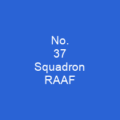The Royal Australian Air Force’s C-130 Hercules: A Lifeline in the Skies
Imagine a world where air transport is not just about moving cargo but saving lives and supporting missions across continents. That’s exactly what the Lockheed C-130 Hercules has been doing for the Royal Australian Air Force (RAAF) since its first aircraft entered service in December 1958. The RAAF received its first C-130A, marking a significant milestone that would see these versatile planes become an integral part of Australia’s military and humanitarian efforts.
From Dakotas to Hercules
The decision to acquire the C-130 was not made lightly. In mid-1957, after considering other types like the Blackburn Beverley and Fairchild C-123 Provider, the RAAF opted for twelve C-130s. This choice represented a huge leap forward from their previous Douglas C-47 Dakotas, offering better payload, range, speed, and manoeuvrability, as well as cabin pressurisation and bulk loading capabilities.
Operational Beginnings
No. 36 Squadron accepted the first C-130As in December 1958, replacing their Dakotas. The RAAF began training crews at Sewart Air Force Base in Tennessee to operate these new aircraft. By August 1966, No. 37 Squadron received twelve C-130Es, and later replaced its C-130Hs with the more advanced C-130Js in 1999.
Service and Missions
The RAAF’s Hercules fleet has seen extensive service during various conflicts, humanitarian missions, and disaster relief efforts. From supporting Australian Army operations in Vietnam to evacuating wounded personnel from the war zone, these planes have been a lifeline for many. The C-130s also played crucial roles in Operation Babylift, flying orphaned children to safety, and in providing aid during natural disasters like the 2004 Boxing Day tsunami.
Evolution of the Fleet
The RAAF’s early model Hercules received several upgrades over their service lives. In the late 1970s, twelve C-130Hs were ordered to replace the long-serving C-130As. By 2006, No. 36 Squadron became the sole operator of the Hercules, while No. 37 Squadron transferred its C-130Hs to Boeing C-17 Globemaster III heavy transports.
Modernization and Future Plans
The RAAF’s current fleet consists of C-130J aircraft, with an additional twenty planes ordered to replace the existing fleet. The Hercules has been updated with advanced satellite communications systems, Large Aircraft Infrared Countermeasures (LAIRCM) systems, and high-speed airdrop ramps. In 2016, all C-130Js were fitted with advanced satellite communications systems and additional crew stations.
Despite the modernization efforts, there is still a need to replace the current fleet. The RAAF has been considering acquiring new C-130Js, potentially up to 24 of them in 2023. This move aims to ensure that Australia remains well-equipped for future challenges and missions.

The RAAF’s C-130 Hercules has been a cornerstone of Australia’s military and humanitarian efforts for decades. From its first flight in 1958 to the modernization plans of today, these planes have proven their worth time and again. As they continue to serve, one thing is certain: the C-130 will remain an indispensable part of the RAAF’s arsenal, ready to face whatever challenges come their way.
You want to know more about Lockheed C-130 Hercules in Australian service?
This page is based on the article Lockheed C-130 Hercules in Australian service published in Wikipedia (retrieved on November 29, 2024) and was automatically summarized using artificial intelligence.







